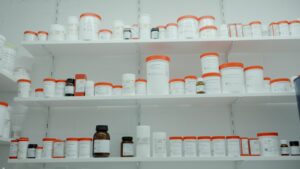Cancer Drug Pricing Analysis: Launch and Post-Approval Trends in the US and Europe

Analyze the disparities in cancer drug pricing and clinical benefits between the US and Europe, exploring policy implications and market trends post-approval.
Introduction
The high cost of cancer medications continues to pose significant challenges for healthcare systems worldwide. Understanding the launch and post-approval pricing trends of these drugs is crucial for stakeholders, including pharmaceutical companies, policymakers, and patients. This analysis delves into the postapproval drug market trends in the United States and Europe, highlighting the disparities in pricing and clinical benefits, and examining the subsequent policy implications.
Launch Prices of Cancer Drugs
Comparison Between the US and Europe
Cancer drugs tend to enter the US market at substantially higher prices compared to their European counterparts. Between 2009 and 2019, the median monthly treatment cost at launch in the US surged from $5,790 to $14,580. In contrast, Germany saw an increase from €4,289 to €5,888, Switzerland from CHF 5,784 to CHF 6,593, and England from £3,939 to £6,867.
Factors Influencing Pricing Differences
Several factors contribute to these pricing disparities:
- Regulatory Frameworks: The US lacks a centralized negotiation mechanism for drug prices, allowing pharmaceutical companies more freedom to set higher prices. In Europe, individual countries employ reference pricing and other regulatory measures to control costs.
- Market Dynamics: The competitive landscape and the presence of multiple stakeholders in Europe often result in more aggressive pricing strategies to ensure market access.
- R&D Investments: Higher initial investment costs in the US market are often passed on to consumers in the form of elevated drug prices.
Post-Launch Price Changes
US vs. European Trends
Post-launch, the pricing trajectories of cancer drugs diverge sharply between the US and Europe. In the US, 74% of cancer drugs experienced price increases exceeding inflation over a decade. Conversely, only 2% in England, none in Germany, and 13% in Switzerland saw similar price hikes.
Implications of Price Increases
The continuous rise in drug prices in the US exacerbates financial toxicity for patients, leading to adverse outcomes and reduced adherence to treatment regimens. In Europe, more stable pricing helps mitigate these issues, ensuring broader access to essential cancer therapies.
Clinical Benefits and Pricing Correlation
Lack of Association Between Price and Clinical Benefit
Interestingly, the analysis reveals no significant correlation between the launch prices or post-launch price changes of cancer drugs and their clinical benefits across both regions. This disconnect raises concerns about the value proposition of high-priced medications and underscores the need for value-based pricing models.
Policy Implications
Need for Reform in the US
The persistent increase in drug prices without corresponding clinical benefits calls for urgent policy interventions in the US. Potential reforms could include:
- Implementing Price Controls: Introducing mechanisms similar to those in Europe to regulate drug prices.
- Enhancing Transparency: Requiring pharmaceutical companies to disclose pricing strategies and R&D costs.
- Promoting Competition: Encouraging the entry of generics and biosimilars to foster a competitive market environment.
Strengthening European Policies
While Europe demonstrates more controlled pricing trends, continued efforts are necessary to maintain affordability and access. Strengthening cross-border collaborations and harmonizing pricing regulations can further optimize drug affordability.
Conclusion
The analysis of postapproval drug market trends highlights significant disparities in cancer drug pricing between the US and Europe. The US market exhibits a troubling pattern of escalating prices post-launch without corresponding increases in clinical benefits, unlike Europe, where prices remain more stable and aligned with therapeutic value. Addressing these disparities through comprehensive policy reforms is essential to ensure equitable access to life-saving cancer treatments globally.
Are you looking to optimize your drug launch strategy and navigate complex market trends effectively? Discover how ConformanceX can enhance your pharmaceutical launch success with data-driven insights and advanced analytics.




